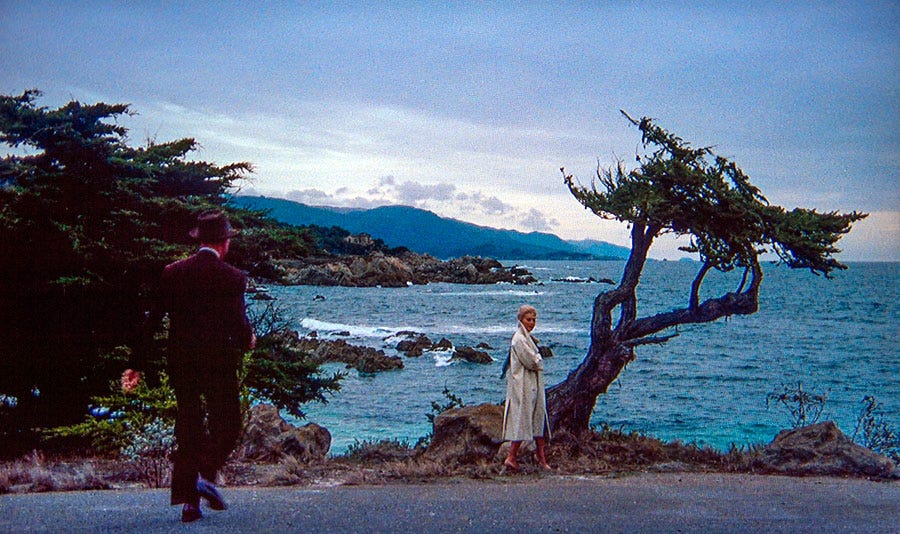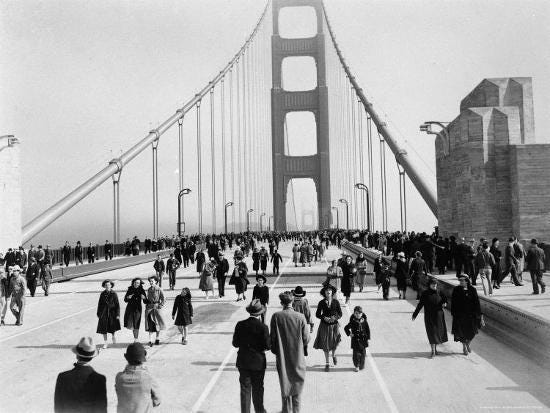californian sensibility
on secrets in san francisco, early computing, having fun
At Southern Pacific Brewing, someone called San Francisco a city of “open secrets.”
The current moment is exactly this paradox. A time of intense paranoia: gated floors, redacted roles, guarded core IP. Simultaneously, a feeling of distinct openness in certain rooms, parties, and group chats. A shared practical curiosity and an invite to partake in debate about the future.
This is a distinctly Californian sensibility. From the semiconductor dawn of the 60s through the commercialization of the web in the 90s, informal networks bloomed across Silicon Valley. At the Wagon Wheel bar in Mountain View, young engineers in the semiconductor industry traded ideas over beers. Like migratory birds, people followed a hunger and drive for excellent work. Atari to Apple, Fairchild to Intel. Descriptions of Silicon Valley emphasized porous social enmeshment: personal friendships transcended roles and organizations. You followed brilliant people wherever they went.
In the early days of new technology, openness is a default. It is joyful. You’re captivated by an idea, a theory. You just want people to talk to and discuss.
One of my favorite examples from the personal computing era is the Homebrew Computer Club, started in 1975 in Gordon French’s two-car garage in Menlo Park, attended by a mix of hobbyists and tinkerers interested in personal computing. In Steven Levy’s Hackers, Homebrew was described as an eclectic group of amateurs transfixed by the possibilities of technology, that would “bootstrap themselves” into learning about hardware. They believed that personal computers were the ultimate ambassadors of decentralization.
Here is the ethos of Homebrew described by Levy:
The membership ranks were open to anyone wandering in, with respect earned by expertise or good ideas, and it was not unusual to see a seventeen-year- old conversing as an equal with a prosperous, middle-aged veteran engineer.
We reinforced each other, Lee Felsenstein, designer of the Osborne 1 (the first mass-produced portable computer) explained. We provided a support structure for each other. We bought each other’s products. We covered each other’s asses, in effect. There we were. The industrial structure was paying no attention to us. Yet we had people who knew as much as anyone else knew about this aspect of technology, because it was so new. We could run wild, and we did.
Stephen Wozniak, the designer of the Apple II computer, was a loyal member to the club. He writes in an old blogpost that without computer clubs, specifically Homebrew, there would probably be no Apple. It was a time of startling transparency. There was a lot of showing off, Wozniak described. Schematics of Apple I were passed around freely, and he’d even go over to people’s houses and help them build their own.
The Apple I and Apple II computers were shown off every two weeks at the club meeting. “Here’s the latest little feature,” we’d say… It’s unusual for one of the most successful products of all time, like the Apple II, to be demonstrated throughout its development.
Wozniak later admits that if you’re trying to build a billion dollar product, it would be in your best interest to keep it a secret. But it didn’t occur to them back then. He wasn’t trying to build a company. He was just curious about what computers could do. They were just having fun.
In reading books about cities, it’s always striking how certain traits or characteristics of a place remain stubbornly intact over time. Beyond the years that you love it and feel it belongs to you, San Francisco will remain San Francisco. Beyond the fogginess and cypress trees, the slow bend of Fort Point, the irises and poppies, the bucolic orchards — the real persistent San Francisco is its ethos. A love for technology and what it can accomplish, a fervor, a stomach for risk. An inclination toward speed over formality, idea over aesthetic. An insular cocoon, a reverence for scale.
These years in San Francisco certainly feel consequential. We drove up the coast last Saturday, ate oysters on the cliffside and tinned tomato sardines with olive bread. On the drive home, I watched the lights flicker on the bay bridge and the cars peeling off the highway toward Oakland, the sprawling complexity of houses and hills dwarfed by the dark blue Pacific water. I thought to myself then that the core wishes we share are astoundingly simple, though they take a lifetime to actualize: Aspire to a high personal standard of craft. Find people you trust and respect. Have fun.
I personally treasure the moments when the veneer breaks. Lately life has felt full of beginnings again. We’re having fun. We’re shepherding each other through mazes and quests of our own choosing. I’ll remember the sensations clearly: the big warm living room, the strain against entropy, the whir of the machine, the animation of the heart.
Thanks for reading,
Nix
PS: Thank you for reading. If you do feel inclined; please like and share this post. Your support helps me reach more readers like you.





I think the ethos of SF is re-invention, the possibility of new futures. Since about the mid-90s that has meant tech - but before then the hippies, before them the beats, before them the many de-mobbed service men, before then before then all the way back 1848.
You come to SF to re-invent yourself, to take part in some dimly understood but mesmerizing future. Ideally you come, curious about the place itself (and what it will mean for you), before the next boom. But if you're here for the boom, well fine ... enjoy!
Signed: Class of 1985 :-)